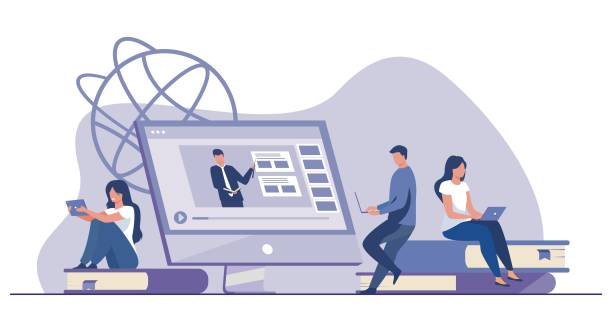Perhaps the most beneficial technology accessible in the twenty-first century is the internet. It not only connects the world, but it also has an influence on every industry in today’s world. While most companies are now using digital marketing to reach a larger audience, schools and institutions are now embracing an internet-based learning model to provide a better learning environment.
Most academic institutions throughout the world were obliged to switch to an internet-based education system as a result of the COVID-19 epidemic. Despite the fact that online learning has been around for a while, it was the pandemic that helped us realize the full potential of internet-based learning. In this blog, we’ll look at some of the primary effects of internet-based learning on students, academic institutions, and other stakeholders.
1. Education that is both cost-effective and accessible:
One of the main reasons why a large number of individuals do not have access to high-quality education is the high expense. The internet not only increases the quality of education but also makes it available to individuals in even the most remote parts of the globe. As you may be aware, a great education is one of the cornerstones of a country’s long-term growth.
Additionally, students may now acquire instruction via videos and web tutorials, which is considerably more cost-effective.
2. Interaction between students and teachers, as well as peer interaction:
Students may stay in touch with their instructors (teachers, coaches, supervisors, and so on) as well as their classmates’ thanks to the internet. Students can connect with one another using social media platforms, texting applications, and chat forums.
Parents can also connect and communicate with instructors and school officials regarding their children’s academic development.
3. Tool for effective teaching and learning:
The internet is increasingly being utilized for both teaching and learning purposes. Teachers can now upload their teaching materials (notes and videos) on school websites and discussion boards. With the use of lesson slides, videos, and notes, the learning experience becomes more fascinating and diversified. Teachers can also engage students’ attention by employing animated presentations, PowerPoint slides, and graphics.
4. Access to high-quality education is simple:
Students may now readily acquire high-quality learning resources for free on digital sites such as YouTube, or pay fees online for higher-quality maths statistics homework assistance.
Teachers, on the other hand, may make use of the internet by providing pupils with additional study materials and tools. The internet has made interactive lectures, instructional quizzes, and tutorials more accessible. Teachers can also videotape their lectures and provide them to students for review.
5. The use of digital media in interaction:
For the present age, using digital media on a regular basis has become second nature. While students used to be hesitant to read newspapers, digital bulletin boards now provide them with the required knowledge about the world around them discrete maths assignment writing services. Furthermore, there are a plethora of paid websites where you may access instructional materials. Such resources are generally of high quality and accessible to a wide range of users.
6. Keeping up with the most recent information:
Knowledge is power, as a wise person once remarked, and the internet supplies us with that knowledge on a regular basis. Every subject has an ocean of information available on the internet. Furthermore, students may utilize the internet to receive the most up-to-date information on the subjects that they are interested in.
Leaving some final thoughts
The internet is unquestionably a blessing to individuals in the twenty-first century. As a result, it’s critical that we use it to good advantage thesis statement generator. It has a significant influence on the delivery of education to youngsters. They can benefit and learn more successfully from the internet if it is used in appropriate ways that meet the child’s developmental level.














